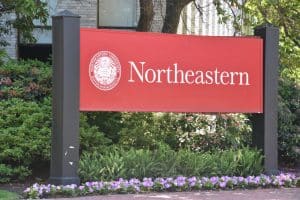Princeton vs Harvey Mudd: Which College is Right for You?
Choosing the right college is an important decision that can ultimately impact your career and future. However, with so many options available, it can be overwhelming to narrow down your choices. Two top-ranking colleges, Princeton and Harvey Mudd, are often sought after by students for their esteemed academic programs, opportunities, and resources. In this article, we will compare and contrast Princeton vs Harvey Mudd in various categories to help you make an informed decision on which college is right for you.
Introduction: The Importance of Choosing the Right College
Before we dive into specific comparisons, it is essential to stress the significance of selecting a college that meets your needs, preferences, and goals. College is more than just pursuing a degree- it is a transformative experience that shapes your intellectual, social, and personal growth.
Your choice of college can influence the connections you create, the opportunities you encounter, and the skills you acquire. As such, it is crucial to research and carefully consider various colleges to find the one that aligns with your interests, passions, and aspirations.
One important factor to consider when choosing a college is the location. Do you want to attend a college close to home or venture out to a new city or state? The location can impact your overall experience, including the cost of living, access to internships and job opportunities, and the cultural and social scene.
Additionally, the size of the college can also play a significant role in your experience. Do you prefer a small, intimate campus or a large, bustling one? The size can affect the class sizes, the availability of resources, and the sense of community on campus.
Another crucial aspect to consider is the academic programs and resources offered by the college. Do they have the majors and courses that align with your interests and career goals? Are there research opportunities, study abroad programs, or internship connections that can enhance your education and future prospects? It is essential to research the faculty, curriculum, and facilities to ensure that the college can provide you with the education and resources you need to succeed.
Princeton vs Harvey Mudd: College Overview
Princeton University is a private Ivy League institution located in New Jersey. It was founded in 1746 and has a longstanding tradition of academic excellence and research. With over 8,000 undergraduate and graduate students and a faculty of over 1,200, Princeton offers over 80 academic departments and interdisciplinary programs.
Princeton’s campus covers 500 acres and has over 180 buildings, including libraries, labs, and research facilities. The university is recognized for its strong programs in the humanities, social sciences, and natural sciences, as well as for notable alumni like former President Woodrow Wilson, actor David Duchovny, and Nobel laureate Toni Morrison.
Harvey Mudd College is a private liberal arts college located in Claremont, California. It was founded in 1955 and has a smaller population of around 900 undergraduate students and 70 faculty members. Harvey Mudd is part of the Claremont Colleges Consortium, which comprises five undergraduate institutions and two graduate schools. Harvey Mudd’s curriculum focuses on science, engineering, and mathematics, although it also offers humanities and social science courses.
The college has state-of-the-art facilities, including research centers and labs, and highly values the intersection of theory and practice. Harvey Mudd alumni include notable figures like astronaut Stanley Love, mathematician Karen Uhlenbeck, and entrepreneur Robert Metcalfe.
Princeton University has a strong commitment to research, with over 100 research centers and institutes on campus. The university is also home to several notable research projects, including the Princeton Plasma Physics Laboratory and the Princeton Neuroscience Institute. Additionally, Princeton has a robust international program, with study abroad opportunities in over 50 countries and a diverse student body representing over 100 countries.
Harvey Mudd College has a unique approach to education, with a focus on hands-on learning and collaboration. The college has a required core curriculum that includes courses in math, science, and humanities, as well as a senior capstone project that allows students to apply their knowledge to real-world problems. Harvey Mudd also has a strong commitment to diversity and inclusion, with initiatives like the Harvey Mudd College Summer Institute, which aims to increase diversity in STEM fields by providing opportunities for underrepresented students.
Academic Programs and Curriculum Comparison
One crucial factor to consider when selecting a college is the depth and breadth of its academic programs. Princeton and Harvey Mudd have different academic focuses, although both offer rigorous and unique curricula.
Princeton has a wide range of academic departments and interdisciplinary programs, from classics to computer science to neuroscience. All students are required to fulfill general education requirements, which provide a foundation in the liberal arts and sciences. Princeton is also known for its independent work, which allows students to delve deeper into an area of interest through a senior thesis. The university’s professors are recognized for their scholarly contributions and often conduct cutting-edge research.
Harvey Mudd’s curriculum is centered on STEM and aims to prepare students to become innovators and problem-solvers. The college’s core curriculum covers natural sciences, mathematics, computer science, and physics, as well as humanities and social sciences.
Harvey Mudd places a significant emphasis on hands-on learning, and students often participate in research projects and internships. The college also offers several combined programs with other Claremont Colleges in areas like biology, computer science, and international relations.
Another important aspect to consider when comparing academic programs is the availability of resources and facilities. Princeton has state-of-the-art research facilities and libraries, including the Firestone Library, which is one of the largest open-stack libraries in the world. The university also has a robust network of alumni who are leaders in various fields and can provide valuable connections and mentorship opportunities for students.
On the other hand, Harvey Mudd has a strong focus on undergraduate education and offers small class sizes, with a student-to-faculty ratio of 8:1. The college also has a unique honor code, which fosters a culture of academic integrity and trust among students and faculty.
Additionally, Harvey Mudd has a strong commitment to diversity and inclusion, with initiatives like the Harvey Mudd College Summer Institute, which aims to increase the representation of underrepresented groups in STEM fields.
Admission Requirements and Acceptance Rates
Admissions requirements and acceptance rates can also play a role in your decision-making process. In comparing Princeton vs Harvey Mudd, both have different admission standards and selectivity.
Princeton has a highly selective admissions process, with an acceptance rate of around 5%. The university considers factors like academic performance, extracurricular activities, essays, and recommendations. Princeton also practices need-blind admissions, meaning they do not consider an applicant’s financial circumstances when evaluating their application.
Harvey Mudd is also a selective institution, with an acceptance rate of around 15%. The college evaluates applicants based on their academic achievements, extracurricular involvement, essays, and character. Harvey Mudd is test-optional, meaning you do not need to submit standardized test scores, although they can still be considered if available. Additionally, the college practices need-based admissions and provides financial aid to meet 100% of demonstrated financial needs.
It is important to note that admission requirements and acceptance rates can vary greatly between different programs and majors within a university or college. For example, some majors may have higher admission standards or lower acceptance rates than others. It is important to research the specific requirements and acceptance rates for the program or major you are interested in.
Another factor to consider is the impact of COVID-19 on admissions. Many universities and colleges have adjusted their admissions policies and procedures in response to the pandemic. Some schools have become test-optional or have made other changes to their admissions requirements. It is important to stay up-to-date on any changes or updates to the admissions process due to COVID-19.
Campus Life Comparison: Housing, Dining, and Extracurricular Activities
When choosing a college, considering the campus environment and amenities offered is essential. Both Princeton and Harvey Mudd have unique campus cultures and activities.
Princeton has a residential college system, in which students are randomly assigned to one of the six residential colleges upon enrollment. Each college has its own dining hall, common rooms, and faculty advisers, fostering a sense of community among students. Dining options at Princeton include both traditional dining halls and specialty locations like cafes, food trucks, and a farmers market. The university also has over 300 student organizations that cover a range of interests and passions, from political groups to performing arts ensembles.
Harvey Mudd also has a strong sense of community among students and faculty. The college provides on-campus housing for all four years, with options for singles, doubles, and suites. Harvey Mudd’s dining options include a dining hall and a cafe with locally sourced and organic food.
The college has over 100 clubs and organizations, including STEM-focused groups, social justice groups, and sports teams. Harvey Mudd also values community engagement and encourages students to participate in service projects and outreach programs.
Location and Surrounding Area Comparison: Urban vs. Suburban Environment
The location of a college can also impact your college experience. Princeton and Harvey Mudd are situated in different environments.
Princeton is located in a suburban area, with a small college town adjacent to the campus. Although Princeton is near major cities like New York City and Philadelphia, transportation options are limited. However, the university offers shuttles to nearby airports and train stations. The town of Princeton has several shops, cafes, and restaurants, as well as opportunities for outdoor recreation.
Harvey Mudd is situated in a suburban environment as well, within the broader Claremont area. The Claremont Colleges Consortium offers opportunities for cross-registration and shared resources, including libraries and dining halls. The town of Claremont has a vibrant downtown area with shops, restaurants, and a farmer’s market. Harvey Mudd is also approximately 35 miles from downtown Los Angeles, providing access to cultural and entertainment opportunities.
It is important to consider the safety of the surrounding area when choosing a college location. Both Princeton and Harvey Mudd have relatively low crime rates, with campus security measures in place to ensure the safety of students. However, it is still important to research the crime statistics and safety measures of the surrounding area before making a decision.
Student Body Demographics: Diversity and Inclusivity Comparison
Diversity and inclusivity are critical considerations when selecting a college. In comparing Princeton vs Harvey Mudd, both have initiatives and programs to foster diversity and equity.
Princeton’s student body is diverse in terms of ethnicity, nationality, and socioeconomic status. The university has several organizations and offices that promote diversity and inclusion, including the Carl A. Fields Center for Equality and Cultural Understanding and the LGBT Center. Princeton also has numerous resources for first-generation college students, low-income students, and underrepresented minorities.
Harvey Mudd is committed to diversity and aims to create a community that reflects the diversity of the world. The college has several diversity initiatives, including a Diversity, Inclusion, and Equity Advisory Committee and a Center for Diversity and Inclusion. Additionally, Harvey Mudd values accessibility and provides resources and accommodations for students with disabilities.
It is important to note that while both Princeton and Harvey Mudd have made strides in promoting diversity and inclusivity, there is still work to be done. According to recent data, Princeton’s student body is still predominantly white, with only 7% of students identifying as Black or African American.
Similarly, while Harvey Mudd has made efforts to increase diversity, the college still has a low percentage of Black and Latinx students. Both institutions have acknowledged these disparities and are actively working to address them through targeted recruitment efforts and increased support for underrepresented students.
Faculty and Staff Quality Comparison: Teaching Style, Research Opportunities, and Accessibility
The quality of faculty and staff can greatly impact your academic experience and future opportunities. Both Princeton and Harvey Mudd have distinguished faculty and staff.
Princeton’s faculty includes numerous Nobel laureates, Pulitzer Prize winners, and MacArthur “Genius” Grant recipients. Faculty members are renowned for their scholarship and research, but also for their teaching and mentorship skills. Princeton also provides abundant research opportunities for students and encourages collaborations between faculty and students.
Harvey Mudd’s faculty members are experts in their respective fields and highly value teaching and mentorship. Faculty members are often engaged in cutting-edge research and frequently involve students in their work. Additionally, Harvey Mudd provides resources and support for students to engage in independent research and projects, from funding to advising.
Another important aspect to consider when comparing the faculty and staff quality of Princeton and Harvey Mudd is accessibility. Both institutions prioritize accessibility and provide resources and support for students with disabilities.
Princeton has an Office of Disability Services that offers accommodations and support for students with disabilities, while Harvey Mudd has a Disability Resources Coordinator who works with students to provide accommodations and support. Additionally, both institutions have accessible facilities and technologies to ensure that all students can fully participate in academic and extracurricular activities.
Tuition Fees and Financial Aid Comparison: Affordability, Scholarships, Grants, Loans, and Work-Study Programs
The cost of tuition and availability of financial aid can also impact your college decision. In comparing Princeton vs Harvey Mudd, both are expensive institutions but provide various financial aid options.
Princeton’s tuition and fees for the 2021-2022 academic year are $53,890, and the total cost of attendance, including room, board, and other expenses, is estimated to be $77,510.
However, Princeton is committed to meeting 100% of demonstrated financial needs of all admitted students, including providing grants instead of loans. Additionally, the university offers a range of scholarships and fellowships, as well as work-study opportunities to offset the cost of attendance.
Harvey Mudd’s tuition and fees for the 2021-2022 academic year are $58,660, and the total cost of attendance is estimated to be over $78,000 per year. However, Harvey Mudd is also committed to meeting 100% of demonstrated financial need for all admitted students and provides need-based grants, work-study opportunities, and loans. The college also offers merit-based scholarships for exceptional academic achievement and leadership potential.
It is important to note that while both Princeton and Harvey Mudd offer generous financial aid packages, the process of applying for aid can differ between institutions.
At Princeton, students must submit the CSS Profile and the Free Application for Federal Student Aid (FAFSA) to be considered for financial aid. Harvey Mudd, on the other hand, only requires the FAFSA. It is important to carefully review each institution’s financial aid requirements and deadlines to ensure that you are able to receive the maximum amount of aid possible.
Another factor to consider when comparing tuition and financial aid is the availability of part-time employment opportunities. Both Princeton and Harvey Mudd offer work-study programs, which allow students to earn money to help cover the cost of attendance.
However, the availability of work-study positions can vary between institutions and may be more competitive at certain schools. It is important to research the availability of part-time employment opportunities at each institution to determine how much you may be able to earn to offset the cost of attendance.
Conclusion: Making Your Decision Based on Personal Preferences and Priorities
In summary, whether Princeton vs Harvey Mudd, both are prestigious institutions that offer top-quality education, exceptional resources, and unique campus cultures. However, each college has distinct strengths and weaknesses that may appeal to different students.
Choosing which college is right for you ultimately depends on your personal preferences and priorities. Consider the factors we discussed in this article, such as academic programs, campus life, location, diversity, faculty, career services, and financial aid, and weigh them against your goals and interests. Additionally, visit each college’s website, attend information sessions and campus tours, and talk to current students and alumni to get a better sense of the college’s culture and community.
By carefully evaluating your options, you will be able to make an informed decision on which college is the best fit for you, setting you on the path to a successful and fulfilling college experience.
Want to learn more about getting into your dream school? You’ve come to the right place. At AdmissionSight, we have over 10 years of experience guiding students through the competitive admissions process.
AdmissionSight can help you put your best foot forward when applying to college this fall. Contact us today for more information on our services.









































